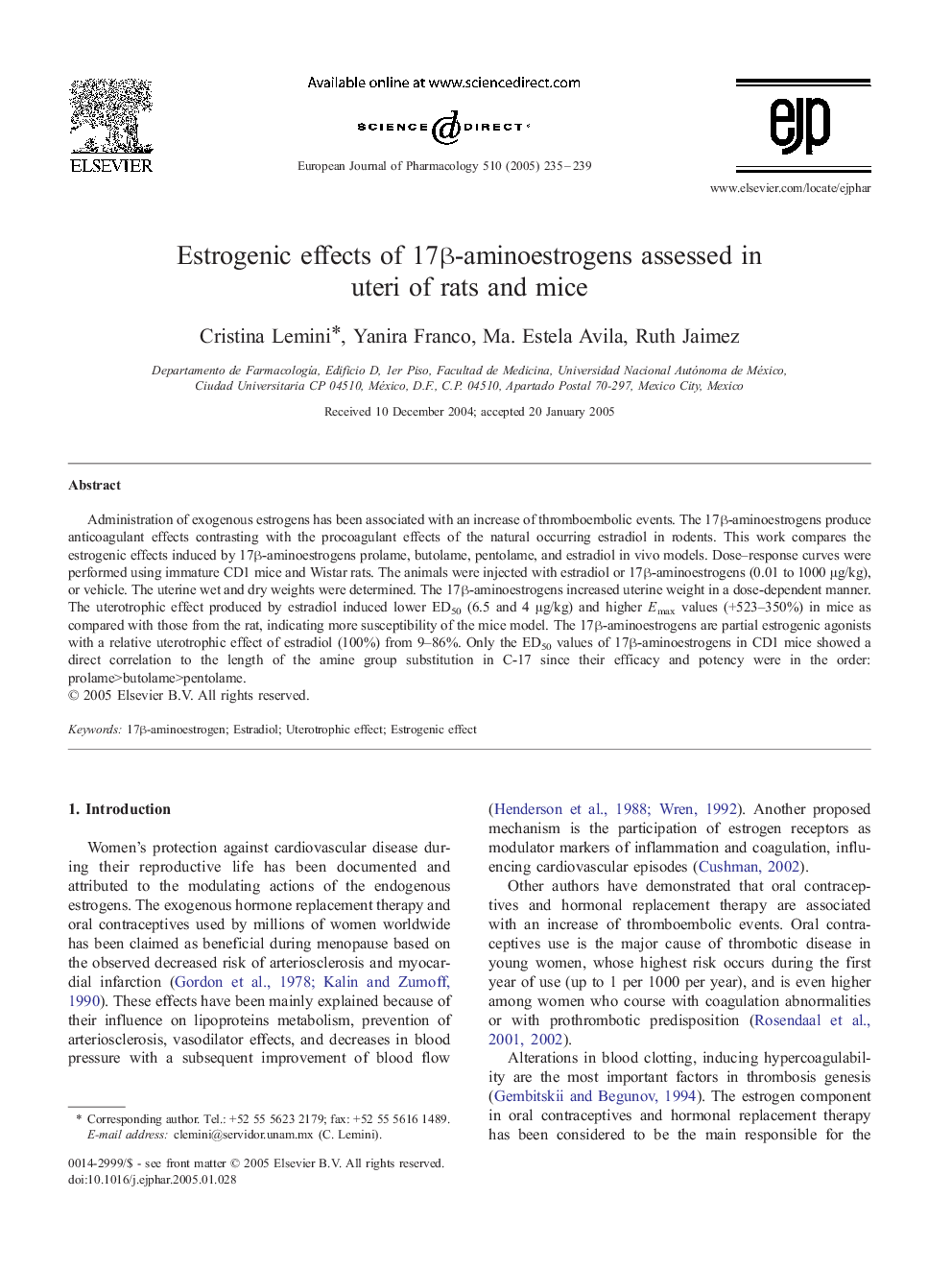| Article ID | Journal | Published Year | Pages | File Type |
|---|---|---|---|---|
| 9921459 | European Journal of Pharmacology | 2005 | 5 Pages |
Abstract
Administration of exogenous estrogens has been associated with an increase of thromboembolic events. The 17β-aminoestrogens produce anticoagulant effects contrasting with the procoagulant effects of the natural occurring estradiol in rodents. This work compares the estrogenic effects induced by 17β-aminoestrogens prolame, butolame, pentolame, and estradiol in vivo models. Dose-response curves were performed using immature CD1 mice and Wistar rats. The animals were injected with estradiol or 17β-aminoestrogens (0.01 to 1000 μg/kg), or vehicle. The uterine wet and dry weights were determined. The 17β-aminoestrogens increased uterine weight in a dose-dependent manner. The uterotrophic effect produced by estradiol induced lower ED50 (6.5 and 4 μg/kg) and higher Emax values (+523-350%) in mice as compared with those from the rat, indicating more susceptibility of the mice model. The 17β-aminoestrogens are partial estrogenic agonists with a relative uterotrophic effect of estradiol (100%) from 9-86%. Only the ED50 values of 17β-aminoestrogens in CD1 mice showed a direct correlation to the length of the amine group substitution in C-17 since their efficacy and potency were in the order: prolame>butolame>pentolame.
Keywords
Related Topics
Life Sciences
Neuroscience
Cellular and Molecular Neuroscience
Authors
Cristina Lemini, Yanira Franco, Ma. Estela Avila, Ruth Jaimez,
